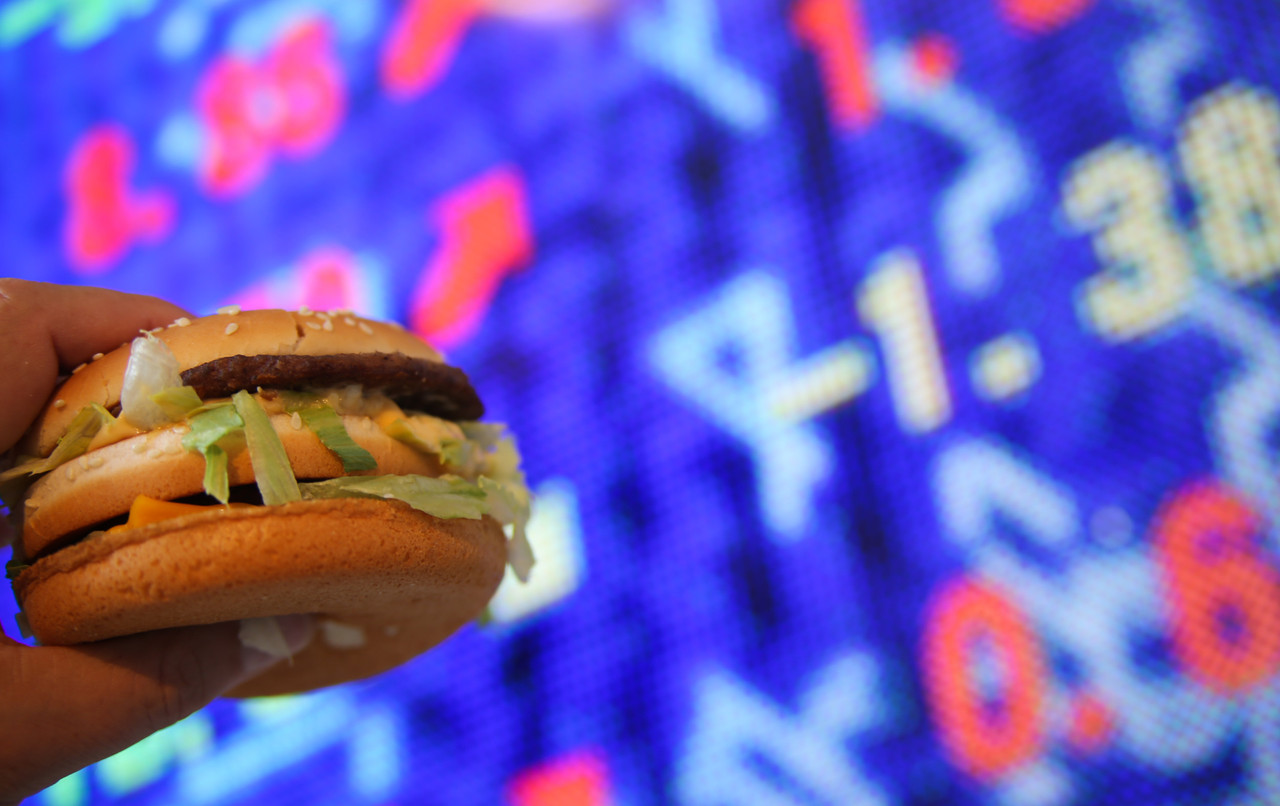Economic weakness in the eurozone, which intensified throughout the first half of the year, finally brought the euro/dollar exchange rate to on 12 July. Since then, the euro/dollar exchange rate has recovered, but has plateaued, with the euro trading at around $1.02.
Read also
The devaluation of the euro remains indicative of a gap in economic health between the euro area and the US, the latter being much less affected by the commodity and energy shock. This is causing investors to abandon the euro in favour of the dollar, which is seen more as a safe haven.
An apparent undervaluation
However, according to The Economist, a Big Mac costs €4.65 in the euro zone, compared with $5.15 in the US. This would imply an exchange rate of 0.90, whereas the current exchange rate is 0.98. The difference between the implicit exchange rate and the current exchange rate suggests that the euro is undervalued by 7.5%, the magazine said.
Calculated by The Economist since 1986, the “”, aims to find out whether currencies are valued at their correct level. The approach is based on the theory of purchasing power parity, the principle that exchange rates should move closer in the long run to the rate that would equalise the prices of an identical basket of goods and services--embodied in the price of the Big Mac--in two currency areas. The differences in local Big Mac prices provide an appreciation of the level the exchange rate should be.
A completely different economic reality
However, the Big Mac Index, as it stands, does not take into account the realities of individual economies, such as labour costs or immigration barriers. It is therefore expected that the price of the Big Mac will vary according to these factors. To compensate for these possible variations, The Economist has adapted its Big Mac Index by adjusting it according to the GDP per capita of each country. GDP per capita is calculated by dividing GDP by the working population.
By adjusting the Big Mac Index to GDP per capita, the result shows a very different reality: the euro is now overvalued by 4.2% against the dollar. This result takes into account the fact that a Big Mac costs 7.5% less in the eurozone than in the US at market exchange rates and that, based on the differences between the two GDP per capita, a Big Mac should actually cost 11.2% less. For analysts at The Economist, the result is clear: the euro is overvalued.
The Economist’s Big Mac Index was never intended to be anything other than a popularisation of exchange rate theory, not an accurate measure of currency misalignment. Yet the index is found in many political economy textbooks and has been the subject of a dozen academic studies. This is enough to reconcile fast-food fans with economics.
Read the original French version of this article on the site
